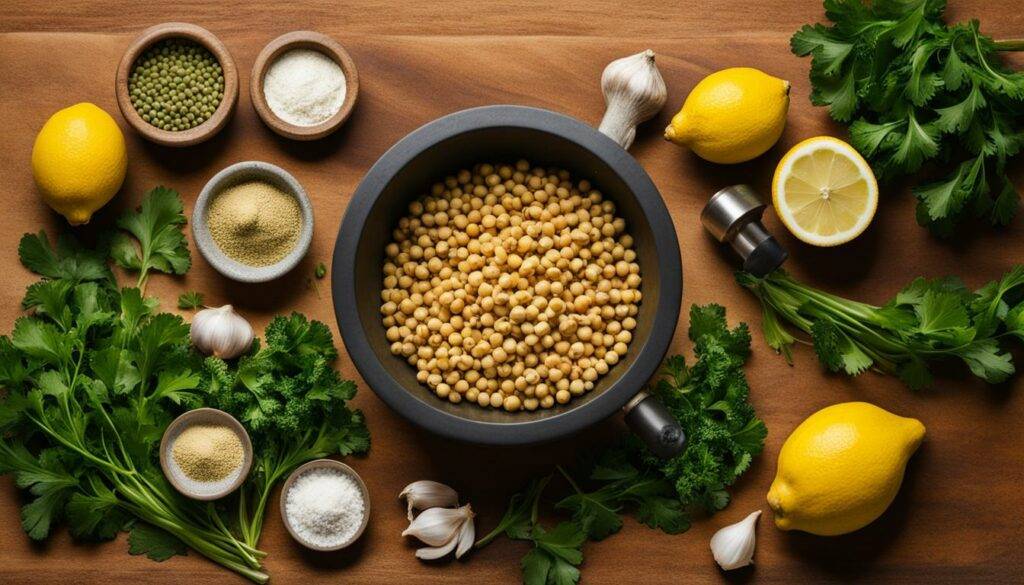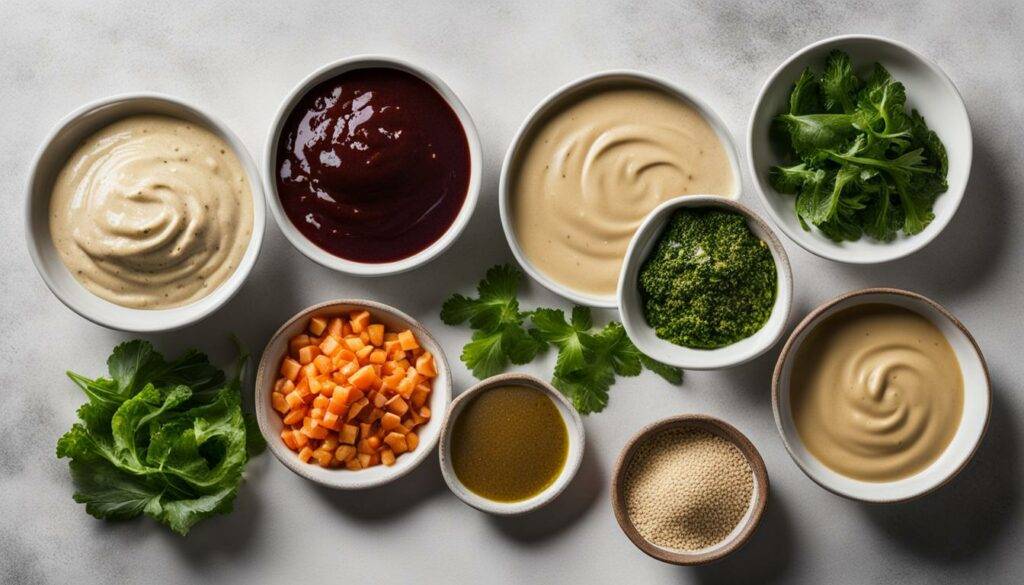The stores these days are filled with different hummus options. You may wonder if this is something you can make at home. Is it cheaper to make or buy hummus? Let’s explore the cost-effectiveness of making hummus at home weigh the financial benefits of homemade hummus versus store-bought.
Key Takeaways
- The cost-effectiveness of homemade hummus depends on your ability to use the leftover ingredients (or how much you make!).
- Homemade hummus offers the potential for savings and customization.
- Store-bought hummus provides convenience and a variety of flavors.
- Store-bought hummus may contain preservatives you can avoid by making your own.
- Ultimately, the choice of making or buying hummus depends on your budget, taste preferences, and convenience.
How to Make Hummus at Home
Making hummus at home is a straightforward process that requires minimal time, equipment, and skill. To make homemade hummus, you’ll need a food processor or blender, chickpeas (canned or dried), olive oil, tahini, garlic, lemon juice, and salt. The process involves combining all the ingredients in the food processor and blending until smooth.
With these simple ingredients and equipment, you’ll be able to prepare delicious homemade hummus in no time. Whether you’re a seasoned cook or a beginner in the kitchen, making hummus from scratch is a rewarding and enjoyable experience.
The Recipe
In a previous post I cover My Favorite Hummus Recipe. In that post, I cover the complete cost to get all of the required ingredients. Here we’ll talk about the cost per batch, so we have an apples to apples cost comparison. You’ll be left with some leftover ingredients, but we’ll talk about other ways you can use those, or you can make more hummus!
How Long Does Hummus Last?
According to the University of Nebraska Institute of Agriculture and Natural Resources, and the USDA FoodKeeper App when refrigerated in an airtight container, homemade hummus can last up to one week. It is important to note that the longevity of hummus also depends on the freshness of the ingredients used. If you’re using leftover ingredients to make another batch make sure you check to ensure your ingredients are still fresh.
Proper storage plays a crucial role in preserving the freshness of your hummus. Here are some tips to keep your hummus fresh for as long as possible:
- Store hummus in an airtight container to prevent moisture and air exposure, which can lead to spoilage.
- Refrigerate hummus promptly after each use to maintain its quality and prevent bacterial growth.
- Keep the temperature of your refrigerator below 40°F (4°C) to ensure optimal preservation.
- Avoid double-dipping or using dirty utensils in the hummus container to prevent contamination and extend its shelf life.
- Inspect the hummus for any signs of spoilage, such as an off smell, unusual texture, or mold growth, and discard it if any concerns arise.
Experimenting with Recipes: Adding Your Own Twist to Hummus

One of the joys of making hummus at home is the ability to experiment with different flavors and ingredients. By adding your own twist to hummus, you can create unique and customized recipes that cater to your taste preferences. Don’t be afraid to get creative and discover exciting new hummus flavors to elevate your snacking experience.
Here are some creative ideas for experimenting with hummus:
- Roasted Vegetables: Add depth and flavor to your hummus by incorporating roasted vegetables such as bell peppers, eggplant, or carrots. Roasting vegetables brings out their natural sweetness and adds a delightful smoky taste to your hummus.
- Herbs and Spices: Infuse your hummus with aromatic herbs and spices like cilantro, basil, cumin, or smoked paprika. These additions can take your hummus from ordinary to extraordinary, adding layers of complexity to the flavor profile.
- Fruit Combinations: For a unique twist on traditional hummus, consider adding fruits like roasted apples, dried cranberries, or pomegranate seeds. The natural sweetness of the fruits pairs beautifully with the savory and creamy hummus.
Feel free to experiment with different ingredient combinations and ratios to find your perfect personalized hummus creations. Don’t limit yourself to conventional flavors—be adventurous and embrace your inner culinary artist.
Remember, the beauty of homemade hummus is that you have full control over the ingredients and can create delicious and innovative variations that cater to your individual taste preferences. So, roll up your sleeves, put on your chef’s hat, and start exploring the world of creative hummus recipes!
Maximizing Your Purchase: Creative Uses for Leftover Ingredients

When making hummus at home, you may find yourself with leftover ingredients such as tahini, garlic and lemons. Rather than letting them go to waste, there are various creative ways to repurpose these ingredients in other recipes.
One versatile ingredient that often remains after making hummus is tahini. This creamy paste made from ground sesame seeds can be repurposed in numerous ways. Consider using tahini in:
- Salad dressings
- Sauces and dips
- As a topping for roasted vegetables
Tahini adds a rich and distinctive flavor to these dishes, elevating their taste profiles and providing a nutty undertone.
There are a million uses for fresh garlic and lemons. When we have leftover lemons we often squeeze the lemons into ice cube trays to save the lemon juice for future use. We never have any trouble using lemon and garlic in our house, here are some ideas:
Cutting the Cost: How to Make Hummus Without Tahini
Tahini, a paste made from ground sesame seeds, is a common ingredient in traditional hummus recipes. However, if you’re looking to cut costs or simply don’t have tahini on hand, there are alternatives to make hummus without it. You can replace tahini with other nut or seed butters, such as almond butter or sunflower seed butter. These alternatives still provide a creamy texture and nutty flavor to the hummus. You can also simple add water, or additional olive oil. By using cost-effective hummus substitutes, you can enjoy homemade hummus without the need for tahini.
How Much Does it Cost to Make Hummus?
In order to make hummus you’ll need to buy more of each ingredient than you actually need for a batch. In order to get an apples to apples comparison, I’ve calculated the cost of just the amount needed for each batch. In order to truly be cost effective you’ll need to make additional batches or have other uses for the leftover ingredients.
Let’s break down the cost:
| Ingredient | Total Cost | Cost/Batch |
|---|---|---|
| Chickpeas | $1.49 (1 lb bag dried) | $0.50 (2 cups prepared) |
| Olive oil | $4.79 (17 oz bottle) | $0.28 (1 oz) |
| Tahini | $6.49 (16 oz Jar) | $0.80 (2 oz) |
| Garlic | $0.67 (1 Bulb) | $0.05 (1 clove) |
| Lemon | $0.79 (1 lemon) | $0.40 (1 TBSP) |
| Salt | — | — |
| Total Cost | $2.03 |
Based on these calculations, the total cost of making homemade hummus is approximately $2.03. However, it is important to note that these costs can vary depending on factors such as the brand of ingredients and your location.
Comparing the cost of homemade hummus to store-bought hummus can provide valuable insights. On average, a 10-ounce container of store-bought name-brand hummus costs around $4.99. Store brand hummus is still more expensive than our homemade version averaging $2.99
This cost breakdown assumes you only have salt, if you also always have olive oil on hand the cost of the recipe drops to $1.75.
In addition to cost savings, making hummus at home allows you to control the quality and adjust the flavors according to your preferences.
| Name Brand | Store Brand | Homemade (buying olive oil) | Homemade (have Olive Oil) |
|---|---|---|---|
Is it Worth Making Hummus From Scratch?
When deciding whether it’s worth making hummus from scratch, you need to consider the pros and cons. Some benefits of homemade hummus include the ability to control the ingredients, customize the flavor, and potentially save money in the long run.
The drawbacks are the time and effort required in preparation and clean-up, but we think it’s well worth it to make our own! We get to control the ingredients, experiment with new flavors, and save money.
Final Thoughts
Making hummus at home offers the benefit of customization and the potential for cost savings. By using simple ingredients and following a straightforward recipe, you can create a delicious and healthy dip that suits your individual taste. Additionally, making hummus allows you to control the quality and freshness of the ingredients used, ensuring a satisfying snack.
Ultimately, whether you decide to make hummus from scratch or purchase it, the taste and satisfaction are guaranteed. Consider your priorities, such as your budget, time availability, and desire for customization, and choose accordingly. Experiment with flavors and ingredients, and don’t be afraid to try new brands and varieties of store-bought hummus. Whichever path you choose, the versatility and deliciousness of hummus will continue to delight your taste buds.
FAQ
Is it cheaper to make or buy hummus?
In our experience homemade hummus is XX% cheaper than name brand hummus and XX% cheaper than store brand. You’ll need to buy more of each ingredient than you actually need,. This is only cost effective if you can find a use for the extra ingredients. This is fairly easy to do if you cook at home often.
How to make hummus at home?
Making hummus at home is easy. You’ll need a food processor or blender, chickpeas, olive oil, tahini, garlic, lemon juice, and salt. Simply blend all the ingredients until smooth and enjoy your homemade hummus.
How long does hummus last?
According to the USDA FoodKeeper App, when stored properly in an airtight container in the refrigerator, homemade hummus can last up to one week.
How can I add my own twist to hummus?
Get creative with your hummus by adding roasted vegetables, herbs, spices, or even fruits. Experimentation with flavors and ingredients allows you to customize the taste and elevate your snacking experience.
What can I do with leftover hummus ingredients?
Don’t let leftover ingredients go to waste. Use tahini in salad dressings, sauces, or as a topping for roasted vegetables. Yogurt can be incorporated into marinades, smoothies, or baked goods.
Can I make hummus without tahini?
Yes, if you don’t have tahini or want to cut costs, you can replace it with other nut or seed butters like almond butter or sunflower seed butter. You can also just use water or more olive oil in place of the tahini.
How much does it cost to make hummus? Can you provide a cost breakdown?
The cost of the ingredients to make a batch of our hummus recipe if $2.03 if you don’t have olive oil and $1.75 if you already have olive oil. This is only cost effective if you have a use for the leftover beans, lemon and garlic, but there are lots a way to use those.
Is it worth making hummus from scratch?
Making hummus from scratch allows for ingredient control, flavor customization, and potential cost savings. It is not difficult to make, and doesn’t have the preservatives often found in store bought foods.





